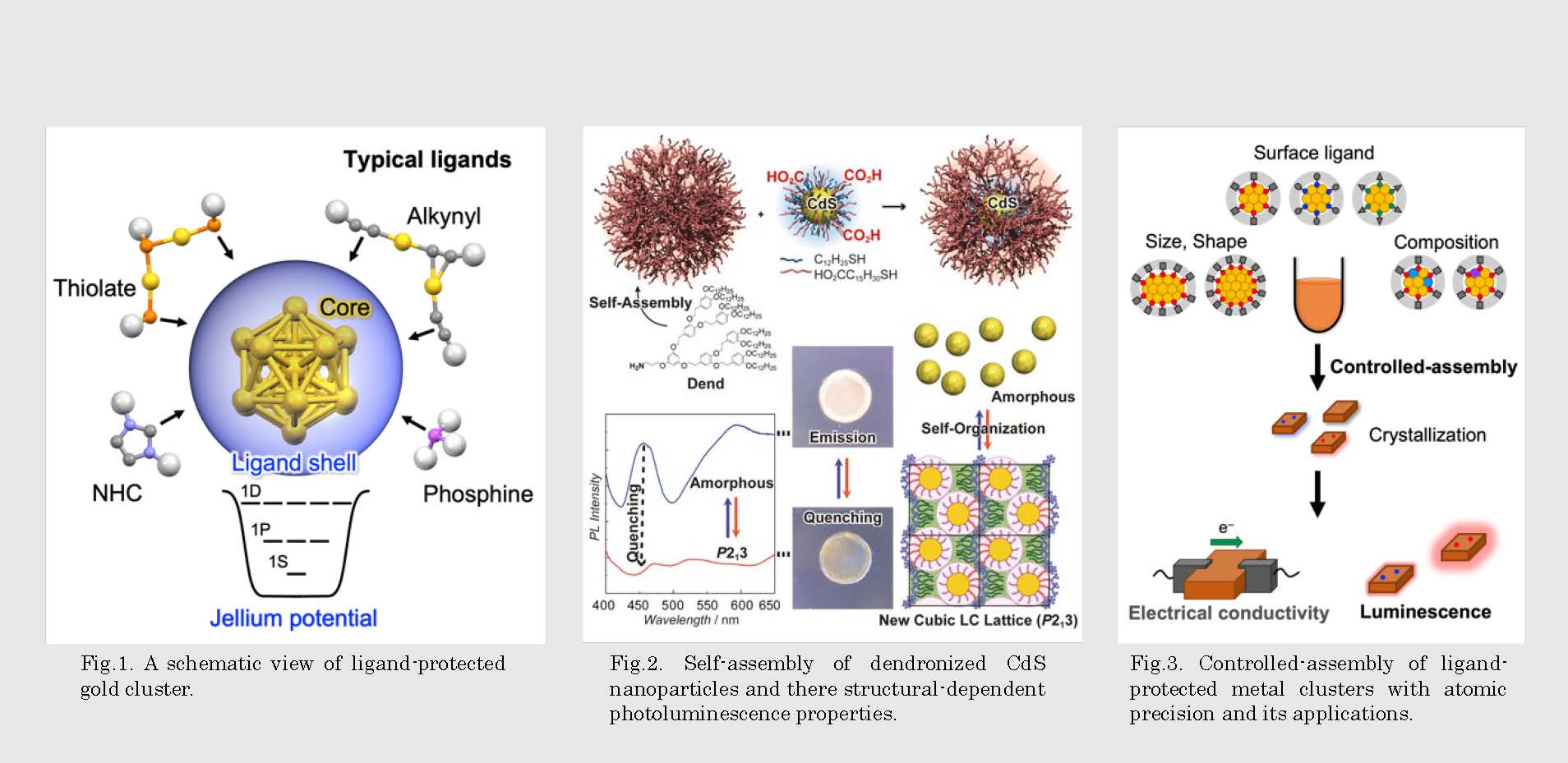IMRAM
Institute of Multidisciplinary Research for Advanced Materials, Tohoku University
東北大学
多元物質科学研究所

LAST UPDATE 2023/08/07
-
研究者氏名
Researcher Name陶山めぐみ Megumi SUYAMA
助教 Assistant Professor -
所属
Professional Affiliation東北大学多元物質科学研究所
無機材料研究部門 ハイブリットナノシステム研究分野
Institute of Multidisciplinary Research for Advanced Materials, Tohoku University
Division of Inorganic Material Research, Hybrid Nano system -
研究キーワード
Research Keywords配位子保護金属クラスター
機能性ナノ材料
集積制御
Ligand-protected metal cluster
Functional nanomaterials
Controlled assembly
- 研究テーマ
Research Subject -
構造因子の精密制御による配位子保護金属クラスター集積化とその機能開拓
Controlled assembly of ligand-protected metal cluster and its applications
研究の背景 Background
直径が2 nm以下で数百個以下の金属原子から構成される配位子保護金属クラスターは、そのサイズの小ささに由来した、バルク金属やナノ粒子とは異なる特異な幾何構造とサイズ特異的な性質を有する。さらに、(1) 構造や組成の原子精度での既定、(2) 構造因子 (サイズ、形、組成、配位子) の精密な制御による多彩な物性の発現が可能であり、機能性ナノ材料の構成単位として期待されている。一方で、金属クラスターの機能性ナノ材料としての意義を確立するためには、その集積状態の制御が重要であるが、体系的な議論は未だなされていない。
Ligand-protected metal clusters with less than a few nanometers have attracted increasing interests as promising building units of functional materials owing to their nonbulk-like structures and size specific properties (i.e. discrete electronic structures). We can synthesize the clusters with atomic precision and exhibit the varieties physical properties of them by precisely controlling the structural factors: size, composition, shape, and surface ligand. On the other hand, the control of the assembly of metal clusters is important to establish their significance as functional materials, however few studies have been conducted systematically.
研究の目標 Outcome
近年、コアの直径が2 nm以上のナノ粒子では、集積化による機能制御が実現されている。例えば、配位子の制御によりナノ粒子間の相互作用を変化させることが、粒子自身の特性の変化をもたらすことが見出されているが、果たして直径が1 nm程度のクラスターサイズ領域においても同様の特性変化が生じるのかは明らかとなっていない。本研究では、上記の知見を参考にしながら、より小さく、より原子精度の構造精密性を持つ金属クラスターを、構造因子を精密に制御して集積化させ、機能発現とその機構解明をすることを目指す。
Recently, development of functional materials with controlled-assembly has actively studied for nanoparticles with core size of > 2 nm. For example, the interaction between nanoparticles changes their properties by controlling the protecting ligand of the particles in the assembly, however it is not clear whether same discussion can be applicable in the cluster size region. This study aims to assemble metal clusters having smaller and more atomically precise structures, and to elucidate their functional manifestations and mechanisms.
研究図Research Figure

Fig.2. Self-assembly of dendronized CdS nanoparticles and there structural-dependent photoluminescence properties.
Fig.3. Controlled-assembly of ligand-protected metal clusters with atomic precision and its applications.
文献 / Publications
Chem, 2017, 2, 860–876. ACS Appl. Nano Mater. 2021, 4, 7395–7403. J. Am. Chem. Soc. 2022, 143, 1683–1698.
研究者HP
- megumi.suyama.d4
 tohoku.ac.jp
tohoku.ac.jp - http://www2.tagen.tohoku.ac.jp/lab/kanie/